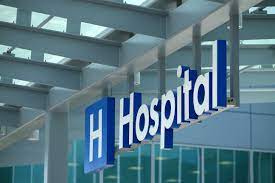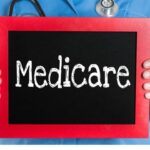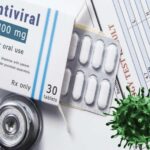List Of Common Drugs Used In Hospitals

According to the Center for Disease Control and Prevention, around 73.9% of hospital visits involved drug therapy, with over 336 million drugs given or prescribed. Most frequently prescribed therapeutic classes are:
- Analgesics
- Minerals and electrolytes
- Antiemetic or anti-vertigo agents
However, medication errors are common in hospitals, and about 1 in 100 results in harm to the patient. When you go to the hospital, it is important to tell your doctor or nurse about all the medication you take, including prescription and non-prescription (over-the-counter) medication, supplements (vitamins) and natural medicines (for example, herbs). Staff need to know what medication you take, because it can affect your health and care in the hospital.
People take regular medication for many reasons. Often, as a person gets older, they may take multiple medications on a daily basis. Many admissions to the hospital can be related to medication. As a normal part of medication management, talk to your doctor to make sure that each medication you take does not interact with any others you are taking. During a stay in the hospital, this is just as important.
Taking medication in the hospital
In hospital, it’s important to let the staff know when you take your medication. This is so the hospital staff can keep track of what and how much medication you take.
Your medication can come from numerous sources, such as:
• different doctors and hospitals
• self-prescribed, over-the-counter
• medication for other conditions.
If you take regular medication at home, bring your medication to the hospital, or have a family member or carer bring it from home. Give it all to your nurse or doctor to keep safe while you are in hospital.
Taking a lot of different medication increases the risk of side effects. Some types of medication can be harmful if they are taken together. In some cases, falls, confusion and incontinence can be caused by medication.
Tell hospital staff if you feel:
• confused or ‘can’t think clearly’
• unsteady while walking
• unwell or in pain.
If hospital staff know what medication you are taking, and when you have taken it, they can make sure your medication is managed and limit the risk of side effects.
Managing your medication in the hospital
Always carry an up-to-date list of your current medications (the name of the medication, the dose, and when and why you are taking it). Give this list to your nurse or doctor.
Always ask your doctor or nurse about your medication.
Questions to ask include:
• why your medication has been changed (if it has)
• what a new medicine is for, and if it is necessary
• what medication you need to take and how much
• why you are taking the medication.
You may be told to stop taking a medication. If this is the case, always ask why it is being stopped. Sometimes, this is because it is not necessary anymore or because it may do you more harm than good. It can often be better for you to take less medication.
Filling Your Prescriptions
Most of the prescriptions the pharmacy receives are sent by computer (electronically). Electronic prescriptions are easier to read than handwritten prescriptions. This means there is less chance of a medicine error with electronic prescriptions.
Your doctor can tell your nurse to write down a prescription for you. Then your nurse can send the prescription to the pharmacy. This is called a verbal order. Your nurse should repeat the prescription back to your doctor to make sure it is right before sending it to the pharmacy.
Your doctor, nurse, and pharmacist will check to make sure any new medicines you receive do not cause a bad reaction with other medicines you are already taking.
The Rights of Medication Administration
The Rights of Medication Administration is a checklist nurses use to make sure you get the right medicine. The rights are as follows:
• Right medicine (Is the right medicine being given?)
• Right dose (Is the amount and strength of the medicine correct?)
• Right patient (Is the medicine being given to the right patient?)
• Right time (Is it the right time to give the medicine?)
• Right route (Is the medicine being given the right way? It may be given by mouth, through a vein, on your skin, or another way)
• Right documentation (After giving the medicine, did the nurse make a record of it? The time, the route, dose, and other specific information about the medicine should be documented)
• Right reason (Is the medicine being given for the problem it has been prescribed for?)
• Right response (Is the drug providing the desired effect? For example, after being given a blood pressure drug, does a patient’s blood pressure stay at the desired range?)
Tips to Stay Safe
You can help make sure you get the right medicine the right way during your hospital stay by doing the following:
• Tell your nurse and other health care providers about any allergies or side effects you have had to any medicines in the past.
• Make sure your nurse and doctor know all the medicines, supplements, and herbs you were taking before you came to the hospital. Bring a list of all these with you. It is a good idea to keep this list in your wallet and with you at all times.
• While you are in the hospital, do not take medicines you brought from home unless your doctor tells you it is OK. Make sure to tell your nurse if you take your own medicine.
• Ask what each medicine is for. Also, ask what side effects to watch for and what to tell your nurse about.
• Know the names of the medicines you get and what times you should get them in the hospital.
• Ask your nurse to tell you what medicines they are giving you. Keep a list of what medicines you get and what times you got them. Speak up if you think you are getting the wrong medicine or getting a medicine at the wrong time.
• Any container that has medicine in it should have a label with your name and the name of the medicine on it. This includes all syringes, tubes, bags, and pill bottles. If you do not see a label, ask your nurse what the medicine is.
• Ask your nurse if you are taking any high-alert medicine. These medicines can cause harm if they are not given the right way, even if they are used for the right purpose. High-alert medicines include blood thinners, insulin, and narcotic pain medicines. Ask what extra safety steps are being taken if you are taking a high-alert medicine.
What you need to know about your medication before you leave hospital
When you leave hospital, make sure you get:
• written information about your medication and any changes made
• an accurate and updated list of your medication – take this list with you when you see your doctor or other health professional.
It is important that you tell your doctor or nurse if you think you might need help taking any of your medications at home.
When you go home, tell your local doctor, pharmacist and any other health professionals you deal with about any medication changes that were made in hospital.
List Of Common Drugs Used In Hospitals
Most medicines come in a variety of types or formats. Be aware, though, that some medicines (particularly rare or unusual ones) only come in one type. Also, some may be more effective in one type than another.
Preparations
Medicines often come in some of the following preparations:
Liquid
The active part of the medicine is combined with a liquid to make it easier to take or better absorbed. A liquid may also be called a ‘mixture’, ‘solution’ or ‘syrup’. Many common liquids are now available without any added colouring or sugar. Magnesium sulfate, a drug used to treat convulsions during pregnancy, nephritis in children, magnesium deficiency, and tetany is a good example. Examples of isotonic solutions include normal saline (0.9% sodium chloride), lactated Ringer’s solution, 5% dextrose in water (D5W), and Ringer’s solution.
Tablet
The active ingredient is combined with another substance and pressed into a round or oval solid shape. There are different types of tablet. Soluble or dispersible tablets can safely be dissolved in water. Examples include Acetaminophen (Tylenol); Aspirin, Ibuprofen (Advil, Motrin IB) and Naproxen (Aleve).
Capsules
The active part of the medicine is contained inside a plastic shell that dissolves slowly in the stomach. You can take some capsules apart and mix the contents with your child’s favourite food. Others need to be swallowed whole, so the medicine isn’t absorbed until the stomach acid breaks down the capsule shell. Examples include: tetracycline capsule, doxycycline capsule.
Other types of medicine:
Topical medicines
These are creams, lotions or ointments applied directly onto the skin. They come in tubs, bottles or tubes depending on the type of medicine. The active part of the medicine is mixed with another substance, making it easy to apply to the skin. Examples of drugs delivered topically include corticosteroids, antifungals, antivirals, antibiotics, antiseptics, local anesthetics, and antineoplastics.
Suppositories
The active part of the medicine is combined with another substance and pressed into a ‘bullet shape’ so it can be inserted into the bottom. Suppositories mustn’t be swallowed. Examples include: Clindamycin vaginal suppositories and Anusol.
Drops
These are often used where the active part of the medicine works best if it reaches the affected area directly. They tend to be used for eye, ear or nose. Examples include: Tetrahydrozoline eye drop (Visine) and Naphazoline, which is found in drugs such as Clear Eyes Itchy Eye Relief and glaucoma drops.
Inhalers
The active part of the medicine is released under pressure directly into the lungs. Young children may need to use a ‘spacer’ device to take the medicine properly. Inhalers can be difficult to use at first so your pharmacist will show you how to use them. Examples include: Fluticasone (Flovent HFA), Budesonide (Pulmicort Flexhaler), Mometasone (Asmanex Twisthaler), Beclomethasone (Qvar RediHaler) and Ciclesonide (Alvesco).
Injections
There are different types of injection, in how and where they’re injected. Subcutaneous or SC injections are given just under the surface of the skin. Intramuscular or IM injections are given into a muscle. Intrathecal injections are given into the fluid around the spinal cord. Intravenous or IV injections are given into a vein. Some injections can be given at home but most are given at the hospital. Many antibiotics given in a hospital setting are administered via injections. Units of insulin and some hormones are commonly administered as subcutaneous injections. Other drugs that need to be given very quickly can also be administered via subcutaneous injection. Epinephrine comes in an automated injector form, called an EpiPen, that’s used to quickly treat severe allergic reactions.
Implants or patches
These medicines are absorbed through the skin, such as nicotine patches for help in giving up smoking, or contraceptive implants. Examples include: Fentanyl (opioid), Nitroglycerine (antianginal), Buprenorphine (opioid), Ensam (antidepressant), Daytrana (transdermal Ritalin), Scopolamine (anti-nausea) , Estrogen and testosterone.
Tablets you don’t swallow (known as buccal or sublingual tablets or liquids)
These look like normal tablets or liquids, but you don’t swallow them. Buccal medicines are held in the cheek so the mouth lining absorbs the active ingredient. Sublingual medicines work in the same way but are put underneath the tongue. Buccal and sublingual medicines tend only to be given in very specific circumstances. Examples include: Nitroglycerin (Nitrostat, Nitrolingual), Suboxone (Zubsolv).





